Having to clean a filthy kitchen and do mountains of dishes after dinner can eviscerate the joys of cooking. But nowhere is it written that making a meal has to mean making a mess. I’ve never been a fan of extra cleaning, and it only gets worse when things start to pile up. To combat a cumulative mess, I’ve developed a rhythm for cleaning while I cook that makes a huge difference when all is said and done.
Some gadgets can help keep the kitchen clean as you work through a recipe, but forming smart habits and efficient systems will go even further. Develop muscle memory for soaking a scorched pan right away before the burnt food has time to set, or moving the garbage can closer so more food waste ends up there and not on the counter or floor.
Below you’ll find my best tips for keeping a clean kitchen while you cook.
1. Designate a garbage bowl
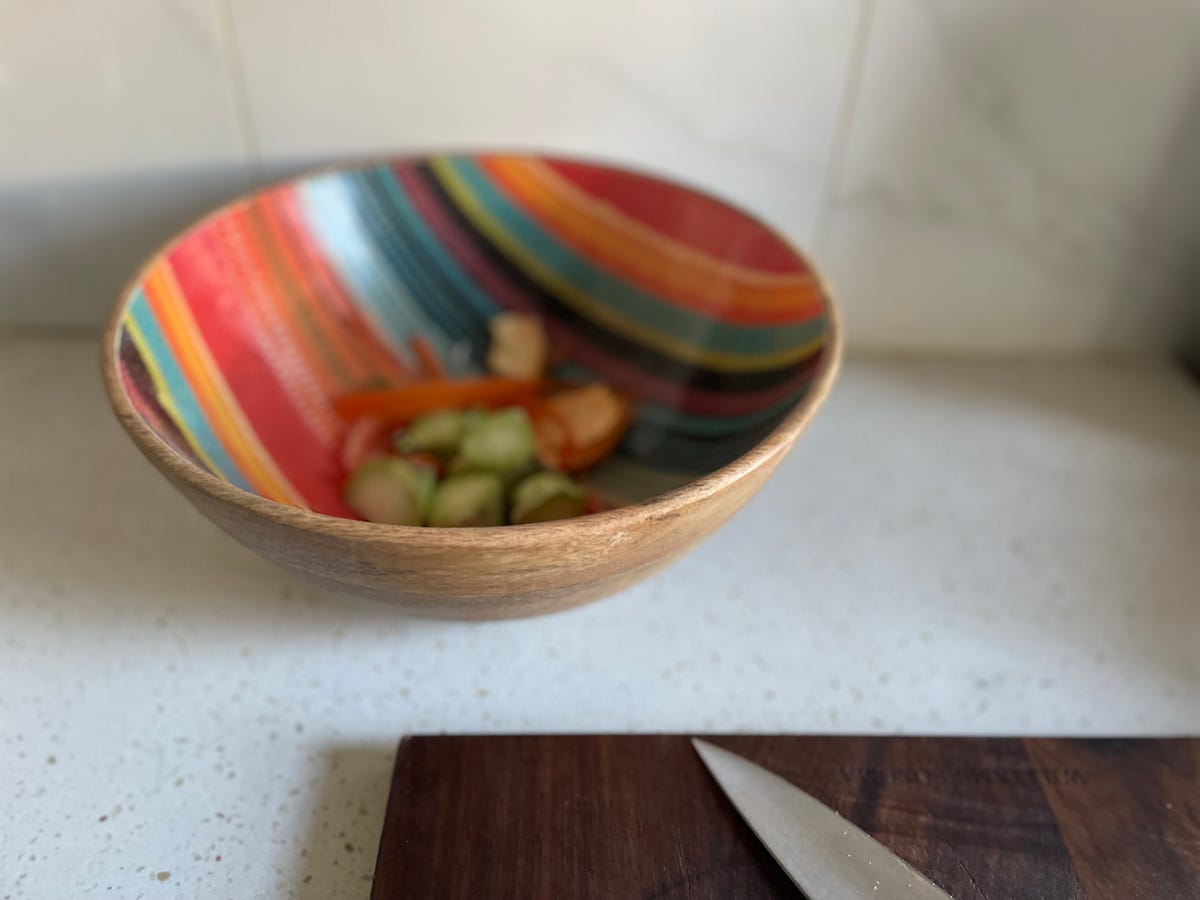
A garbage bowl or countertop compost bin will keep food waste and other garbage from piling up around you.
I learned this one years ago from TV chef Rachael Ray, and it’s as useful today as it was then. Either bring the main compost bin or garbage can nearer to the action or designate a large bowl to place on the counter to use as a temporary bin for onion skins and celery ends. If the trash or compost is closer, you’ll use it more frequently and be less likely to let the nasty stuff pile up.
Automatic kitchen composters such as the Lomi and Mill will process your food waste into usable garden fuel or animal feed. They both cost a few hundred dollars, but go a long way in keeping your kitchen free of odors and organic waste out of the landfill.
2. Go easy on the heat
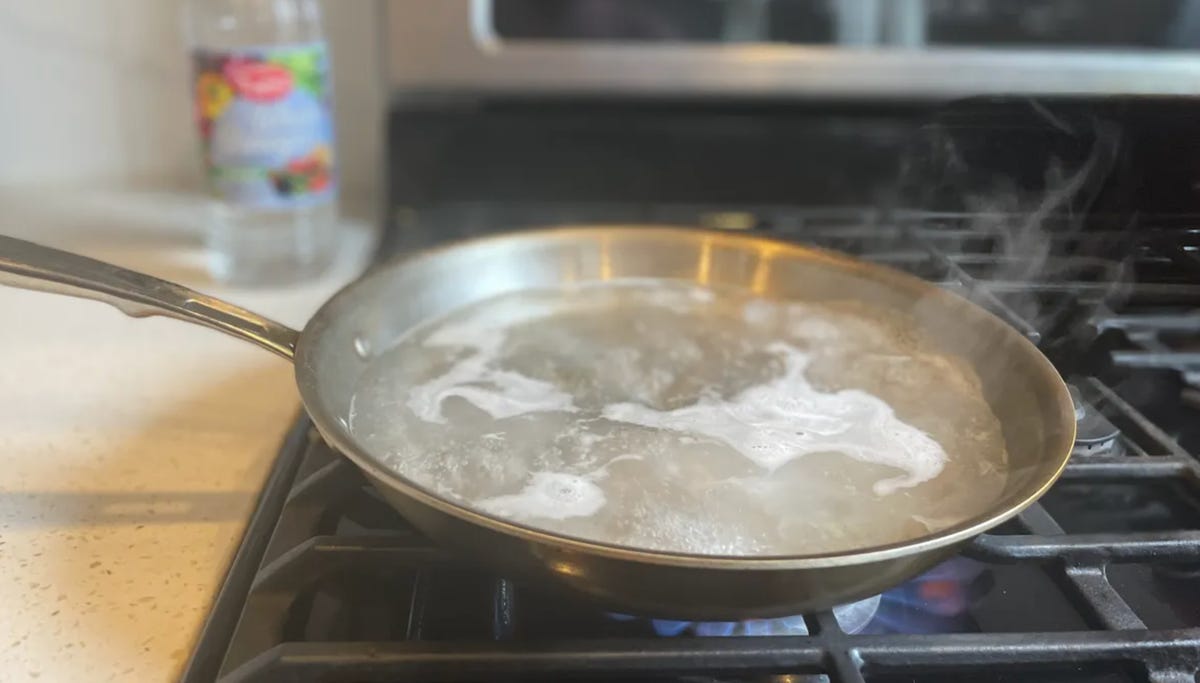
Baking soda and vinegar can remove even the most baked-on cookware stains.
Some recipes require high pan-surface heat to get a sear or develop a quick crust without overcooking the inside. But a lot of foods don’t. Be careful not to crank the range up too high for scrambled eggs, meatballs or chicken thighs, or you’ll end up with scorched pans that require soaking and scrubbing.
If you do burn the pan, don’t panic. Use these pantry staples to clean any stain from steel cookware in minutes. Here’s how to clean a scorched cast-iron skillet.
3. Get yourself a splatter guard

The Splatter Dom’s open top allows you to manage the food inside without removing the guard from the pan and risking a grease-showered stove.
The best way to clean a mess in the kitchen is to prevent it from happening in the first place. One of the biggest sources of a dirty post-cooking kitchen is when grease pops and splatters across that pristine stovetop. A splatter guard will lessen the damage by keeping cooking oil and food in the pan. I recommend the sturdy silicone SplatterDom (read our full SplatterDom review) because it sits on the rim of the pan and allows you to keep both of your hands free for cooking. It’s also adjustable to fit two pan sizes and has a removable lid.
4. Clean as you go
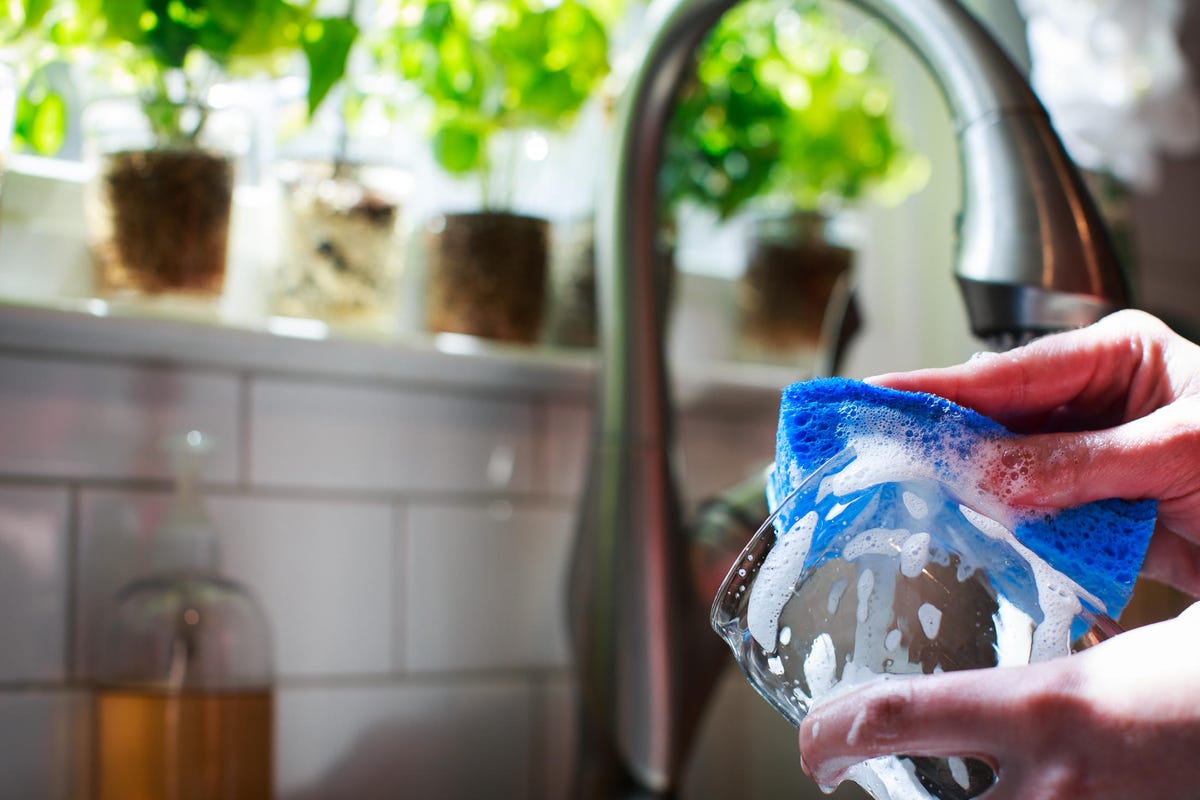
Time to lean means time to clean.
Cleaning as you cook is one habit you’ll have to train yourself to incorporate, but it makes an enormous difference. A few well-timed wipes with a wet sponge or rag — along with loading dishes, cutting boards, pans and containers into the dishwasher as you cook — will make a huge impact on the final state of the kitchen.
If you find yourself looking at an oven timer or clock between recipe steps, find something small to clean or unused ingredients to put away.
5. Use foil in between the stove and counter

A fresh foil boat ready for floor-protecting duty.
The miniscule space in between the stove and the counter is truly the devil’s playground. Cleaning crumbs and other bits of food from that crevice is nearly impossible without moving the stove, so your best bet is to prevent them from falling down there in the first place. A small piece of aluminum foil will keep that cursed space free from future mouse food.
6. Soak pots and pans (almost) immediately and use dish spray, not liquid soap
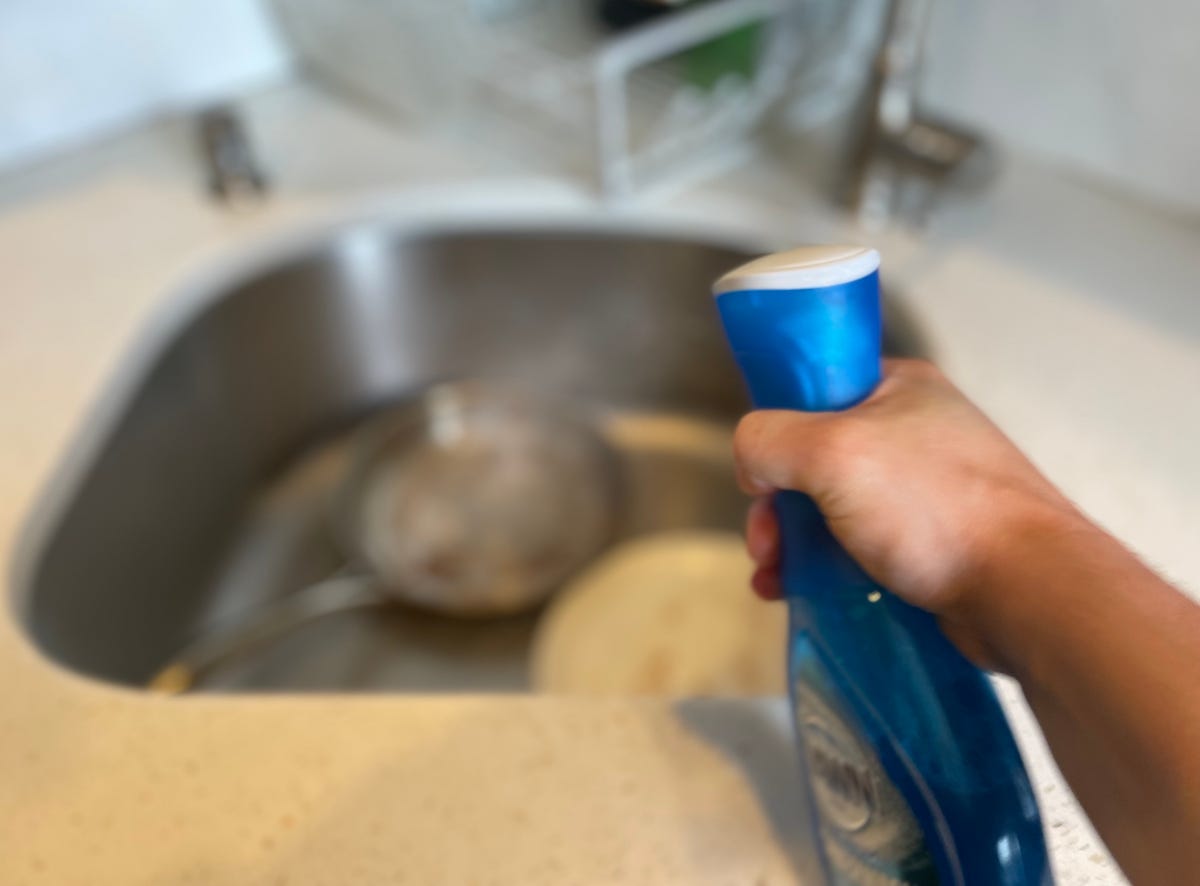
A perfect plume of dish soap headed for every square inch of my filthy skillet.
Washing scorched pots and pans with caked-on food is often the most time-consuming part of kitchen cleanup. While you may not be able to avoid that step altogether, the sooner you can get those pans covered with soap and soaking in water, the easier they will be to clean.
While you don’t want to douse scalding hot pans with cold water for fear of warping the metal, you can certainly get that soak going while the pan is still warm and before the food really sets.
For best results, switch from liquid soap to a dish spray such as Dawn Powerwash. Dish spray allows you to quickly coat the entire surface of a dirty pan with one or two spritzes of grease-fighting mist. Here’s my full review of Dawn Powerwash.
7. Use a Dutch oven
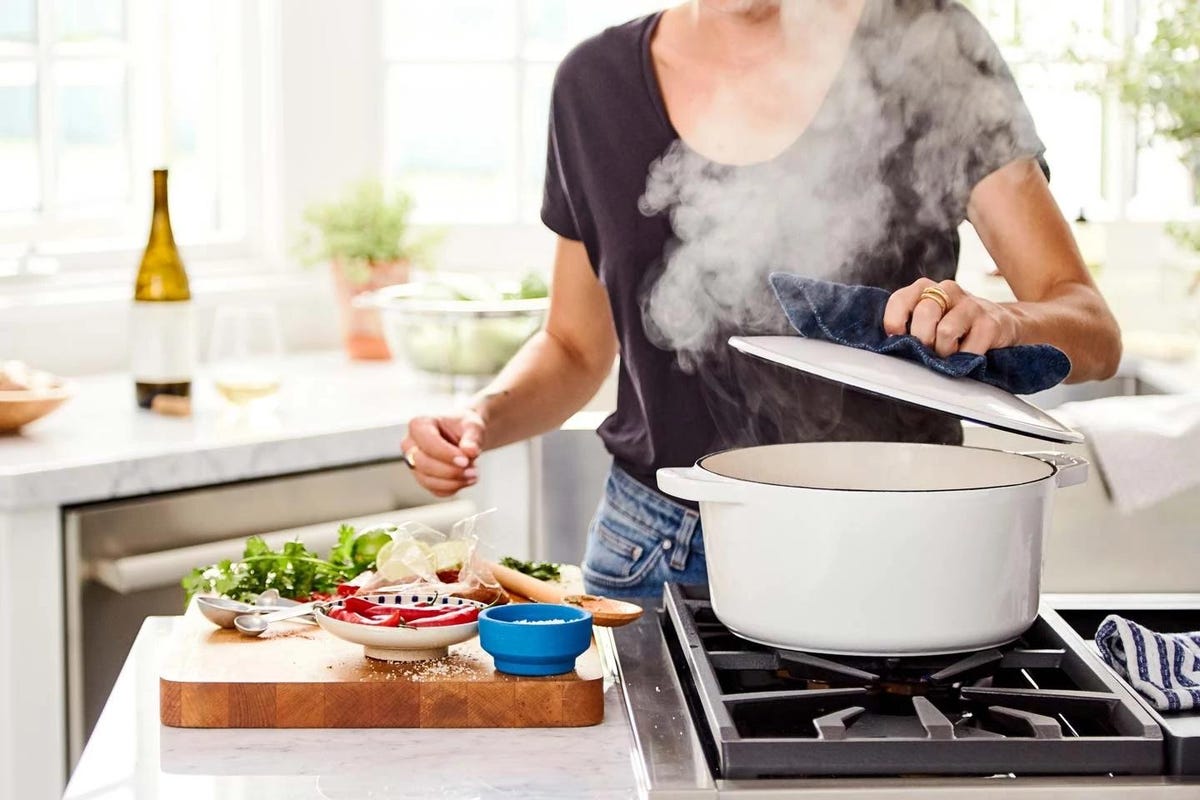
Use a nonstick or enameled Dutch oven for a cleaner kitchen.
Some pieces of cookware are superior for cooking without making a mess, and an enameled Dutch oven is up there. For one, most Dutch ovens have high walls and a lid, so you’re less likely to have grease, liquid and food splatters. Quality Dutch ovens also have a naturally very nonstick enamel coating that rarely needs scrubbing.
While enameled cast iron isn’t quite as nonstick as Teflon-coated cookware, it’s pretty darn close. Unlike stainless steel or nonenameled cast iron, even seemingly stuck-on food lifts fairly easily from this versatile cookware material. At worst, a short soak with soap and water almost always does the trick.
These are the best Dutch ovens for 2024, from pricey French heirloom pots to more budget-friendly models.
8. Load the dishwasher properly
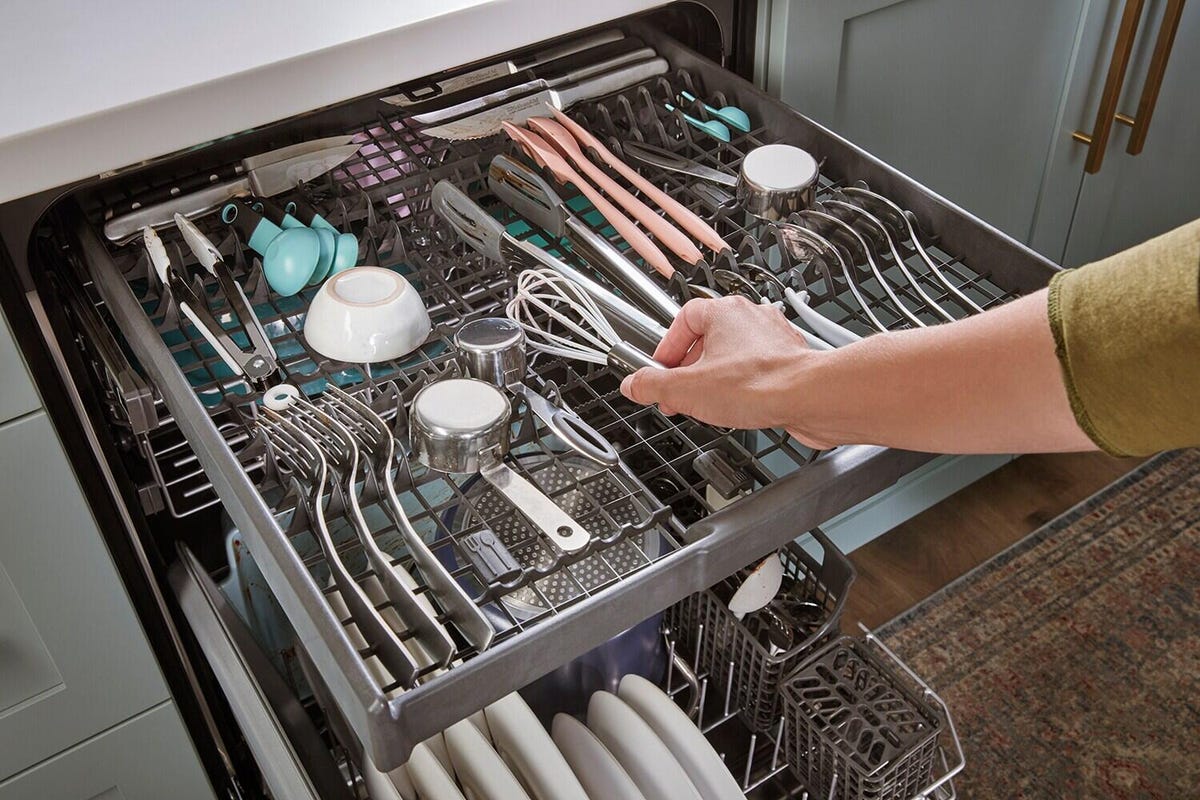
The third rack provides another place to load silverware, kitchen utensils and other small items.
Despite what your partner said in a recent post-dinner spat, there is a right way — and wrong way — to load the dishwasher. If you follow this simple guide for arranging plates, bowls, glasses and silverware, you’ll maximize space and have cleaner dishes afterwards. And if your dishwasher isn’t working well or smells funny, it’s probably because the filter needs cleaning.
9. When grilling, use grill mats for flaky food
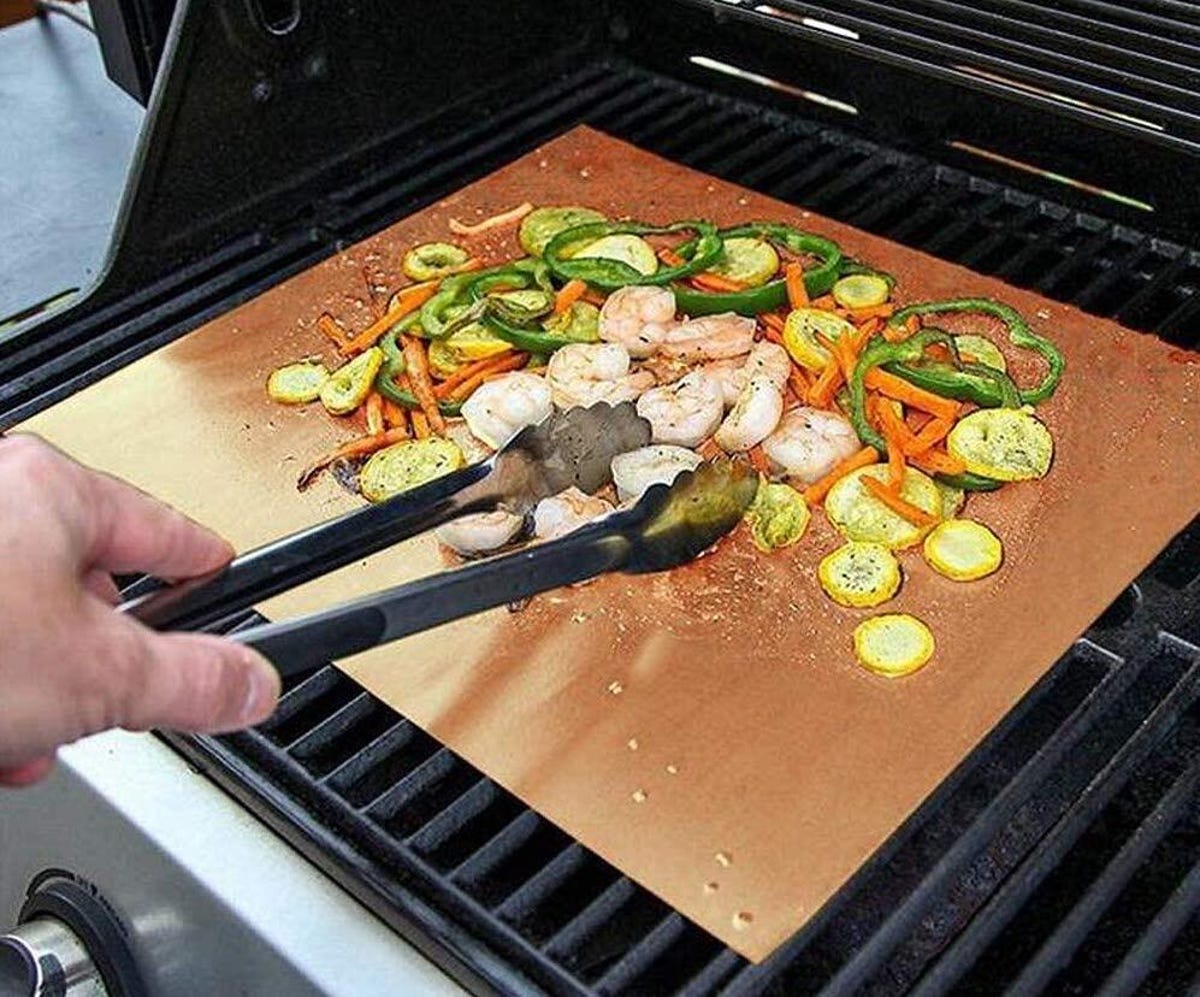
Grill mats will save you from having to do a bleak rescue mission later.
Seasoned grillers know the agony and ecstasy that come with firing up the Traeger or Weber at mealtime. While grilling outside keeps the mess far from your kitchen, flaky fish and vegetables often fall through the grates to the fire below creating a burnt mess that’s not for the faint of heart. Fire-safe grill mats for those fall-apart foods are an easy fix for a cleaner grill. And here’s how to properly clean your grill before and after each season.




















+ There are no comments
Add yours